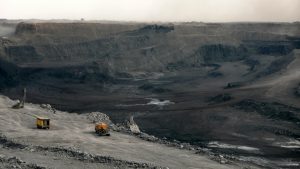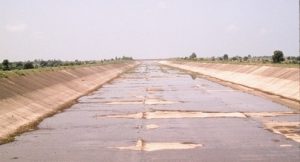Helle Thorning-Schmidt came home at 3:30am one night last August to find her home flooded after heavy rains. Ironically the Danish prime minister had been attending European Commission meetings discussing climate change among other topics. As she cleaned up the soggy mess at home, she recalls thinking that "climate change truly affects us all".
According to the Intergovernmental Panel on Climate Change (IPCC) Synthesis Report, released at the beginning of November in Copenhagen, there are now more and longer-lasting heat waves, more heavy rainfall events, bigger storm surges, larger wildfires and other extreme events than prior to 1950. Some of these “have been linked to human influences” and such events are “very likely” to get worse in future than they are today, the IPCC report concludes.
For example, Denmark has experienced extensive flooding in recent years. In 2011, one downpour resulted in 5 billion euros in damages to the city of Copenhagen alone. “We’re having lots of floods now and these are badly damaging our infrastructure,” Thorning-Schmidt told 750 attendees at the IARU Sustainability Science Congress in Copenhagen in October. “Climate change is happening now.”
With growing evidence of a link between climate change and costly weather disasters, what are the implications for the UN negotiation process towards a global climate treaty in Paris next year?
“All weather events are affected by climate change because the environment in which they occur is warmer and moister than it used to be,” says Kevin Trenberth, senior scientist at the National Center for Atmospheric Research (NOAA) in Boulder, Colorado and an expert on extreme events.
Conditions in the atmosphere have fundamentally changed, he explains, thanks to hundreds of millions of tonnes of carbon dioxide emitted from burning fossil fuels. Carbon dioxide traps the sun’s heat and as a result there is far more heat energy in the climate system and warmer temperatures. This also means 4-6% more moisture in the air – “fuel” for storms that makes them more destructive, says Trenberth.
“This is the new normal,” he says. “It doesn’t make sense to rebuild in some regions – they’ll just be swept away again.”
Changing odds
This new normal is borne out by a ground-breaking series of studies of 16 extreme weather events in 2013, most of which bear the fingerprints of climate change according to a team of researchers from around the world. For the first time, thanks to new data and better computer models, scientists were able attribute the odds of actual extreme events occurring with or without climate change. They found that climate change increased the odds of nine extremes in 2013: heat waves in Australia, Europe, China, Japan and Korea, intense rain in parts of the United States and India, and severe droughts in California and New Zealand. The studies were published in the special edition of the Bulletin of the American Meteorological Society in September.
California’s devastating drought is ongoing and researchers at Stanford University determined that the warming from carbon emissions was three times more likely to create the conditions for drought than with no emissions. “There was a strong link to climate warming,” says Stanford’s Daniel Swain.
Australia’s record breaking heat wave in 2013, meanwhile, would not have happened without climate change, Swain told chinadialogue. Not all extreme events are so clearly connected to global warming, however, in large part because the complex natural variability of weather systems and a lack of data in some cases, he added.
Forecasting where and when extreme events will occur is even more challenging. However a new mathematical method based on “big data” may help to predict extreme rainfall in the South American Andes. An international team of scientists led by Germany’s Potsdam Institute for Climate Impact Research (PIK) say they can “correctly predict 90% of extreme rainfall events in the Central Andes”.
“The data was there, but nobody joined the dots like this before,” says co-author Jürgen Kurths of PIK.
Rising costs
One industry getting increasingly worried by the strengthening evidence that climate change is increasing extreme weather is the insurance sector, which faces a rapidly rising bill. In Canada, for example, property damages from extreme weather averaged US$200 to US$500 million a year over 24 consecutive years. In the last six years it shot up to US$1 billion a year and in 2013 it was US$3.4 billion.
“Extreme weather events are increasing in frequency and intensity,” explains Blair Feltmate, professor at Canada’s University of Waterloo and chair of the Climate Change Adaptation Project Canada, though not every event is caused by climate change. “It’s like a baseball player on steroids: you can’t say every home run is because of the drug but it does increase the odds of hitting more home runs.”
He adds: “What people need to understand is this is only going to get much worse. A US$35 billion flood is coming to Canada.”
Many countries have contributed relatively little CO2 to the fossil-fuel blanket heating the planet but are, like the Philippines with Typhoon Haiyan, which killed more than 6,000 people, already experiencing significant impacts from extreme events. This reality was officially recognised at a contentious United Nations climate treaty meeting last December in Warsaw, Poland.
After 36 straight hours of intense negotiations industrialised nations finally agreed with developing nations that a new climate treaty will have what’s called a “loss and damage mechanism”, or the “Warsaw mechanism”. This recognises that the impacts of climate change will lead to both economic and non-economic losses, including the growing issue of climate refugees.
Nearly a year later there has been little progress on fleshing out how the Warsaw Mechanism will work. A leaked internal US State Department document revealed US fears that poor nations will seek “redress for climate damages from sea level rise, droughts, powerful storms and other adverse impacts”.
A new climate treaty that caps carbon emissions, provides financial assistance for adaptation and has a functional Warsaw Mechanism is supposed to be signed by all nations in Paris by December 2015. But pessimism about the ability of negotiators to reach a meaningful deal abounds.
“From a science perspective there is a good case that climate change contributed substantially to the damage from Haiyan,” says NOAA’s Trenberth. How much damage is hard to determine. In addition perhaps there were too many people living in too vulnerable a region he said. “Who was responsible for that?”







